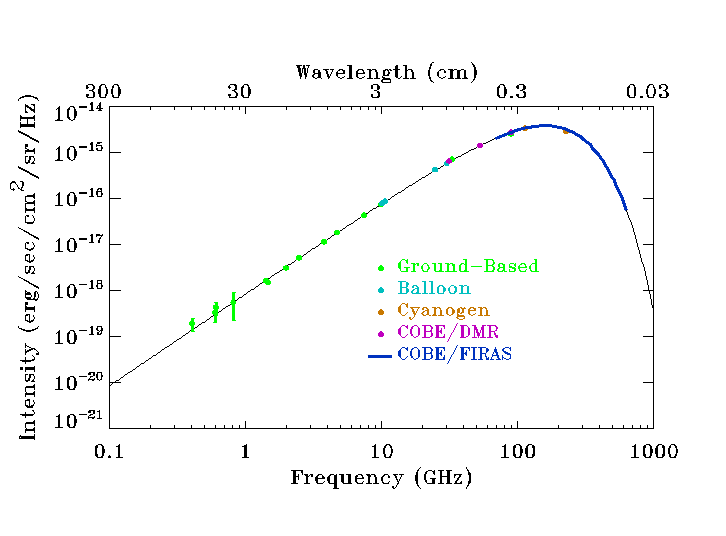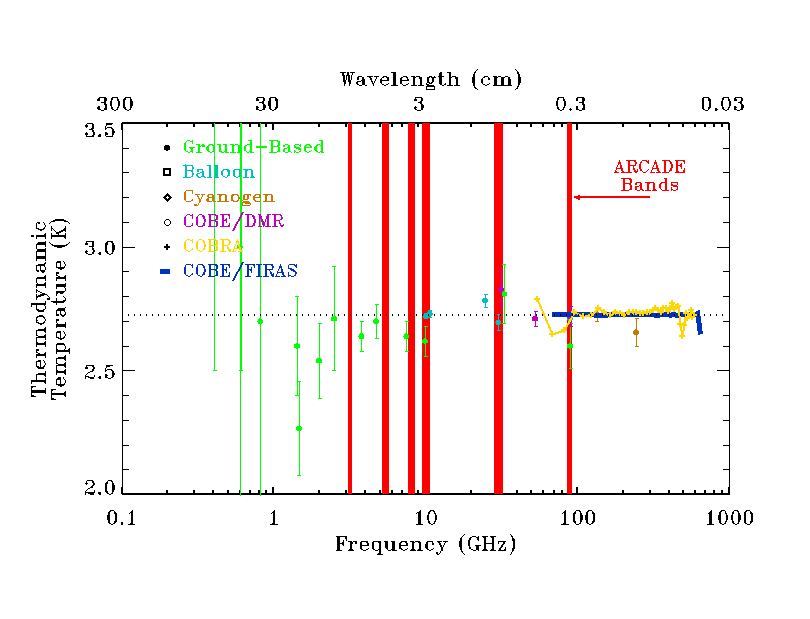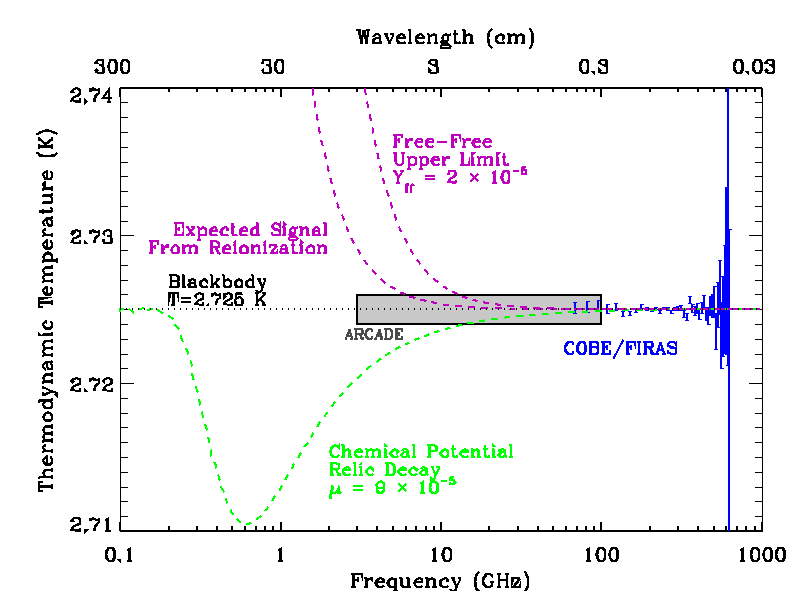 |
 |
CMB Spectrum
The cosmic microwave background is a thermal relic
of a hot, dense phase in the early universe.
For the first year after the Big Bang,
the temperature and density remained high enough
for photon-creating processes
(pair creation and double Compton scattering)
to proceed rapidly compared to the overall Hubble expansion.
The matter and radiation in the early universe
were thus in thermal equilibrium,
characterized only by the temperature
plus any conserved quantum numbers.
The subsequent expansion of the universe
shifts the radiation to colder temperatures
but does not otherwise change the spectrum:
in the absence of later non-equilibrium interactions,
the cosmic microwave background
will follow a blackbody spectrum.

The plot
above shows measurements of the intensity of the
cosmic microwave background
as a function of observing frequency (or wavelength).
The CMB follows the expected blackbody curve
over more than 5 orders of magnitude in intensity.

A more compact way to plot these data is to show
the thermodynamic temperature corresponding to the
measured intensity of each data point.
The second plot
shows the result.
Although the data still cluster around a temperature of 2.725 K,
in agreement with the intensity data above,
it is apparent that the experimental uncertainies become large
at long wavelengths.
Deviations from a perfect blackbody curve
as large as several percent
could exist at wavelengths longer than 1 cm
and would have escaped detection.
ARCADE
is designed to
measure the CMB spectrum
at centimeter wavelengths
a decade below FIRAS.
It will measure the
path length of ionized gas in the early universe
to determine the
epoch of reionization
and subsequent structure formation,
and will detect or limit spectral distortions from
dark matter iteractions
in the early universe.
Both of these processes are likely under current cosmological theory
and allowed by current measurement limits.
Even a null detection will place important new constraints
on the matter content, structure, and evolution
of the universe.

The
plot above
compares the COBE/FIRAS data set
to current upper limits
on the spectral distortions from
reionization and structure formation
(purple)
or the
decay of massive relic particles
(green).
Both signals become unobservably small at millimeter wavelengths.
The gray box shows the ARCADE frequency range
and the anticipated 1 mK error budget.
ARCADE will measure the CMB spectrum
at wavelengths 15 cm to 3 mm
(3 GHz to 90 GHz frequency)
where the cosmological signals are largest.
|
|


